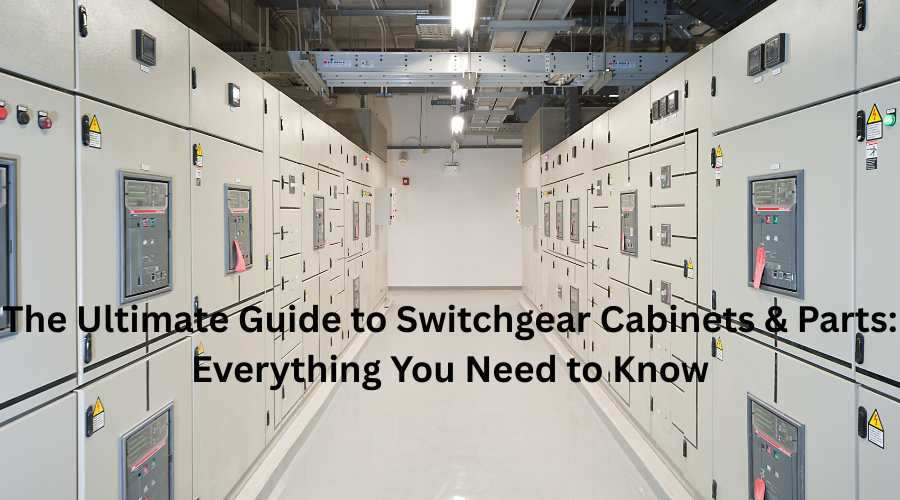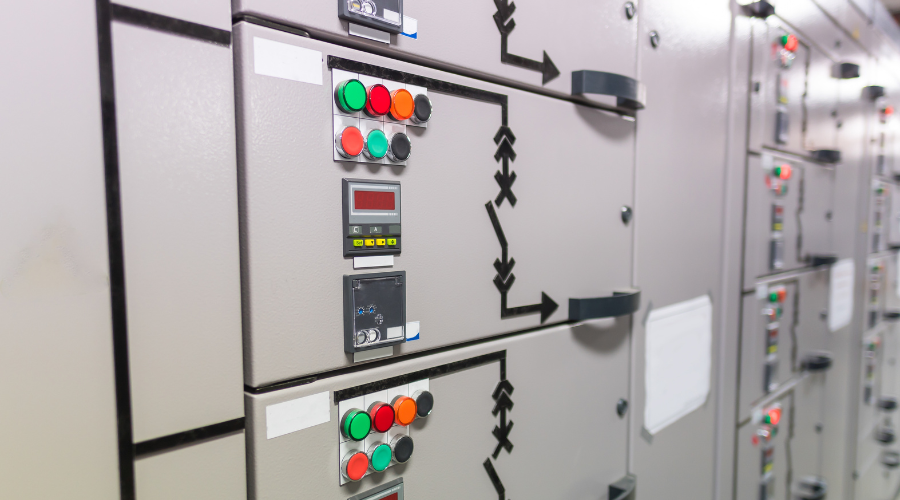


If you've ever dealt with an electrical system—whether in an industrial facility, a commercial building, or even a large residential setup—you've likely encountered something called a switchgear cabinet. It might not be the flashiest part of the electrical world, but it's one of the most critical components keeping systems safe, organized, and efficient.
In this comprehensive guide, we're diving deep into everything related to switchgear enclosures and their internal components. Whether you're an electrical engineer, a maintenance professional, or just someone curious about how power distribution really works, this post is for you.
A switchgear cabinet is essentially a protective housing that contains electrical disconnect switches, fuses, or circuit breakers. Its main job? To control, protect, and isolate electrical equipment.
When a fault or overload occurs, the switchgear ensures that only the faulty section is cut off—while the rest of the system continues to function. This avoids large-scale outages and, more importantly, prevents hazards like fire or electrocution.
In short, these cabinets are the guardians of electrical systems.
Imagine a busy industrial plant or a high-rise office building. Electricity is constantly flowing, feeding machines, computers, elevators, lights—you name it. Now, imagine something goes wrong—a sudden surge or a short circuit.
Without the right switchgear in place, the result could be catastrophic damage to expensive equipment or even a risk to human life.
Improve operational safety
Enable routine maintenance without interrupting the power supply
Prevent equipment damage
Localize electrical faults
Ensure compliance with electrical codes and regulations
They're not just boxes with wires—they're highly engineered systems designed for optimal performance and protection.

Various types of switchgear enclosures exist because they are made for different applications and needs. Most of the time, these kinds are grouped into the following types:
They are found in places that use under 1,000 volts, such as homes, businesses, and small industries. Often, molded case circuit breakers, contactors or relays are found inside the panel.
They handle voltages that go from 1kV up to 36kV. Usually, you can see them in bigger industrial facilities and at utility substations since the power requirements are greater there.
They are built to function in difficult and harsh places.While both offer good protection, metal-clad units provide extra isolation between components, enhancing safety.
You can read more about this in our blog
What Are The Types Of Switches?
Now that we understand what the cabinet does let's look at what's inside.
These are the frontline defenders. They interrupt the current flow when something goes wrong—whether it's an overload or a short circuit.
Used to completely isolate a section of the circuit for maintenance or emergency purposes.
Old-school but still effective in many settings. They break the circuit when too much current flows, sacrificing themselves to save the system.
Thick strips of copper or aluminum distribute power within the cabinet. They must be properly insulated and securely fastened.
They detect faults and therefore send a signal to trigger the circuit breakers. In essence, they are like commanders that oversee how the system should proceed.
Voltage meters, current meters, and monitoring gadgets are a part of these devices. Modern cabinets could be fitted with tracking systems that keep you informed when your products get moved.
How these cabinets are built depends greatly on what they are made from. Most are following this type of material:
Powder-coated steel – Affordable and durable
Stainless steel – Ideal for corrosive environments
Aluminum – Lightweight and resistant to rust
Fiberglass – Non-conductive and perfect for specialized needs
Aside from the frame, the internal components must meet safety and durability standards, especially in high-temperature or high-moisture environments.
A switchgear cabinet can't be put in a room and left there without any additional work. Important factors are: Ventilation: There's a high chance of things overheating when you use compact cabinets. Ensure that there are no obstacles for maintenance workers or those using the machine. The location of breakers and disconnects should be easy for operators to reach. Make sure to follow the local rules for electrical systems, which include grounding and labeling.
Professional installation is non-negotiable, as mistakes can lead to serious consequences.
Just like any other equipment, switchgear cabinets need routine care. Here are some tips to keep them working flawlessly:
Perform visual inspections monthly—look for dust, corrosion, or loose wires.
Tighten connections regularly—vibrations can loosen them over time.
Test protective devices at least once a year.
Keep records of every maintenance and inspection session.
This not only ensures long life but also helps identify early signs of trouble.
Today, more and more switchgear systems are becoming intelligent and connected. Smart gear includes sensors and communication modules that offer:
Real-time fault detection
Remote monitoring
Predictive maintenance alerts
Energy consumption insights
It’s not only for looks; it increases productivity, cuts back on expenses and reduces the time machines are out of order.
Selecting Proper Type of Cabinet and Components Choosing the right cabinet will always depend on your requirements. Consider:
Voltage level
Environmental conditions
Available space
Expansion capabilities
Budget constraints
Be sure to choose a trustworthy supplier who will give you equipment, as well as after-sales technical support and extra parts.
Although their setup looks complicated, modern electricity systems depend greatly on switchgear cabinets and their components.They ensure that everything operates smoothly and securely because they are dependable. Whether you're designing a new electrical layout or upgrading an old one, understanding how these systems work is the first step toward making smart, future-ready decisions.
Don't treat them as just a box of wires—they're the backbone of any efficient electrical setup.
Q1: What's the difference between switchgear and circuit breakers?
A: A circuit breaker is a single protective device, while switchgear includes the entire system—enclosures, disconnects, breakers, and controls—that manage power flow and safety.
Q2: How often should switchgear be serviced?
A: Annually, though high-demand environments may need inspections more frequently. Periodic inspection is always better than emergency repairs.
Q3: Can switchgear be upgraded without replacing the whole cabinet?
A: Yes! Many modern systems are modular. You can replace or add components to meet new load requirements or safety standards.
Q4: Are there eco-friendly switchgear options?
A: Yes. Some systems now use dry-type insulation instead of SF6 gas (a greenhouse gas), and smart monitoring reduces unnecessary energy waste.
The advent of smart grids has changed how electric power is produced, distributed, and consumed.
READ FULLHigh Voltage Switchgear It is a
READ FULLTransformer substations are like the core of our electrical systems. They transfer power to our h
READ FULL